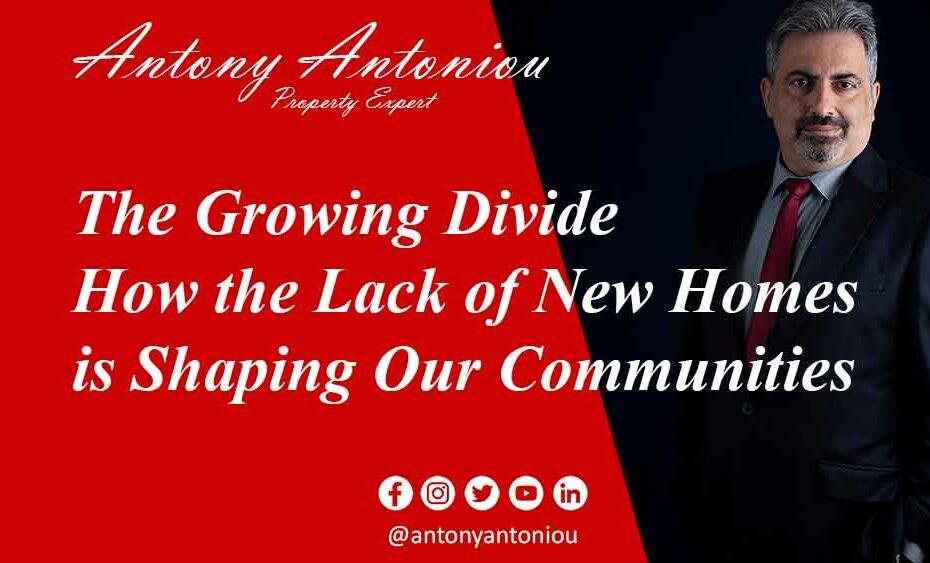The Growing Divide – How the Lack of New Homes is Shaping Our Communities
Introduction
The picturesque allure of rural life has long held a place in the collective imagination. Yet, as idyllic as it sounds, the reality of living in the countryside has taken a stark turn for the younger generation. A pervasive lack of affordable housing in rural areas is contributing to what’s being termed an “age divide,” pushing young individuals and families into city “ghettos.” The term “Nimbyism” – standing for “not in my back yard” – has taken root in rural areas, opposing housing developments that cater to younger demographics. This trend is driving up prices, creating an unsettling urban-rural dichotomy.
The Age Divide: A Stark Reality
In a sobering analysis, the Intergenerational Foundation has sounded the alarm on the repercussions of the housing crisis. The scarcity of affordable homes in rural areas has set the stage for what some might call “age segregation.” Younger generations, burdened by the exorbitant costs of countryside living, find themselves funneled into densely populated urban spaces. Meanwhile, the rural housing market is disproportionately populated by retirees and second homeowners, leaving young aspiring homeowners with limited options.
Nimbyism and its Consequences
Nimbyism, a term that encapsulates the resistance to development in one’s neighborhood, is casting a shadow over the rural landscape. It’s a phenomenon that’s actively thwarting the creation of housing options tailored to younger individuals, exacerbating the influx of young people into cities. Angus Hanton, a voice from the Intergenerational Foundation, emphasizes how this age segregation is intensifying housing prices. He underlines how the demand from young city dwellers, coupled with a dearth of affordable rural housing, is driving up prices, making it increasingly unattainable for younger generations.
Urban “Ghettos” and the Suburban Donut
Painting a vivid picture, Hanton likens the situation to a suburban donut. The outskirts are occupied by older generations, while younger individuals are constrained to urban areas, often the pockets of lower-income housing and buy-to-let properties. This situation not only deepens the housing crisis but also fosters the growth of urban pockets characterized by economic disparity.
The Impact on Society
The consequences of this age divide ripple far beyond the housing market. The chasm between generations leads to increased ageism and other societal problems. Rural areas have witnessed a disproportionate increase in median age over the past two decades, while urban pockets with younger populations have flourished. This divide hampers interactions between generations, nurturing misunderstandings and exacerbating social polarization.
A Multi-faceted Problem
The challenges posed by this age divide are multi-faceted. Housing prices surge, village establishments dwindle, and transportation costs skyrocket. Rural areas suffer from a lack of affordable housing, while the younger demographic grapples with soaring rents and diminishing prospects of homeownership. It’s a complex issue that extends far beyond the housing market – encompassing social dynamics, economic mobility, and even political polarization.
The Need for a Balanced Approach
Paul Brocklehurst, the chairman of the Land Promoters and Developers Federation, advocates for a holistic solution. He emphasizes that the housing crisis impacts not only the economy but also social mobility and overall well-being. To address this, he calls for a more inclusive development strategy, one that extends beyond major urban centers to encompass suburban and rural areas.
A Government in Transition
While steps are being taken, there’s still work to be done. Government initiatives like the “Levelling Up” plan and promises of increased housing construction are steps in the right direction. However, critics point out that focusing solely on urban areas might neglect the needs of rural communities. The delicate balance between urban and rural development needs to be carefully maintained.
Conclusion
The growing age divide spurred by the lack of affordable rural housing is reshaping our communities. The picturesque allure of the countryside is fading as younger generations find themselves boxed into urban spaces, caught in the crossfire of a housing crisis and Nimbyism. As we navigate this evolving landscape, a comprehensive approach that prioritizes balanced development and inclusivity is crucial. Only through such measures can we bridge the gap, fostering a society where generations coexist harmoniously and the dream of a home – be it in the city or the countryside – becomes achievable for all.

